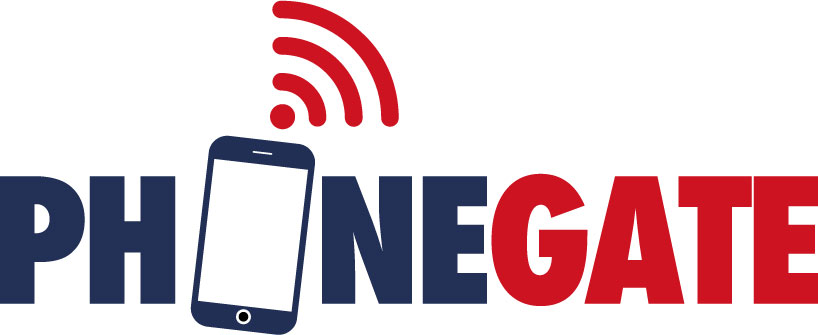We have auto-translated into English with Meris help the two excellent in-depth articles on Phonegate published by the Swiss magazine Infosperber. Here is the first one.
Cell phones emitted far too much radiation for decades – until today?
by Pascal Sigg, infosperber.ch, 18 January 2024 – auto-translation
Just a few years ago, the so-called Phonegate revelations showed that the radiation emitted by mobile devices is inadequately controlled. With the exception of the Observer (paywall), no media in this country has reported on this in depth.
The extent to which radiation from mobile devices such as smartphones or tablets affects the human body is measured using the so-called SAR value. This determines the energy absorbed at a specific part of the body by measuring the temperature on the skin.
But the limits are controversial. Firstly, because the manufacturers have a say in how measurements are taken. Secondly, because scientists assume that a mere temperature measurement does not rule out the possibility that the radiation affects the body in other ways – and even at a lower intensity. And thirdly, because, as in Switzerland , there is hardly any independent control of whether the devices comply with the specified limit values.
In July 2016, the French authority ANSES published an expert report (English summary) on the health risks of electromagnetic radiation for children. The report mentioned measurements by the National Frequency Agency (ANFR) from 2015. These are said to show that almost 90 percent of the cell phones tested exceed the established SAR limits. Some devices even emitted two or three times too much radiation.
The doctor Marc Arazi immediately demanded that the detailed ANFR measurement results be released. He was working with a journalist on a book about the health risks of electromagnetic radiation and understood what the report said. And these were much more explosive than initial media reports suggested. The report questioned how the radiation from mobile devices was actually measured and classified.
But only after a year of legal and media tug-of-war did ANFR release some of the results. They were surprising because popular and widely used devices from Apple, Sony and Nokia exceeded the limits many times over – since 2012. Nevertheless, they were classified as compliant.
The reason: the ANFR measured the radiation intensity on the device itself. However, the manufacturers measured at distances of up to 25 millimeters from the body. Because the radiation decreases quadratically as the distance from the source increases, they were able to show test results in which the devices complied with the limit values. It was only in 2017 that the distance was standardized to 5 millimeters – a compromise. In other words: If devices are pressed against the ear or carried in a trouser pocket, they may exceed the limit values in these places.
In reference to the Dieselgate scandal surrounding emission measurements at Volkswagen, Arazi began calling the revelation “Phonegate” (he describes the events in his book – in French and English). It took until April 2018 before France recalled its first phone because of excessive radiation. Arazi’s internationally networked initiative “Phonegate Alert” called for the worldwide recall of over 250 models in August 2018 because their test values were too high. But ANFR continued to resist issuing the detailed test reports, even though the manufacturers had already received them.
In August 2019, the Chicago Tribune published an article by a Pulitzer Prize-winning investigative journalist about his own measurements, which also found radiation levels that were far too high. After manufacturers like Apple questioned the results, the newspaper upped the ante – whereupon the criticism fell silent. In autumn 2019, ANSES published a detailed report on the measurements of device radiation and their risks for children, which the authority had withheld for more than two years. In it, it recommended that the measurements be taken directly on the device and that no distance from the body be taken into account.
The report also cites various publications by ETH professor emeritus Niels Kuster, who helped develop the measuring systems and now sells them worldwide with the company SPEAG .
SPEAG is a leader in the international measurement market and develops numerical tools and instruments for the accurate assessment of near and far electromagnetic fields. It supplies testing laboratories, manufacturers and governments that conduct independent testing of mobile phones. Niels Kuster says these tests are complex and expensive.
That’s why only the first device is actually fully measured for approval. In addition to France, Germany and Finland also carry out isolated tests in Europe. However, the French are the only European authority to randomly purchase a large number of devices in stores and then test them in their own laboratory and an external test house.
Kuster tells Infosperber:
“Authorities measure cell phones because software changes or replacement of components in the manufacturing process can significantly change the exposure.”
Today, Phonegate Alert is still waiting for the detailed reports of the measurements since 2012. They are important because the French authorities should have informed other European countries – including Switzerland – that over 40 cell phone models showed radiation levels that were far too high. And because manufacturers are still allowed to measure the radiation of their devices at a distance of at least five millimeters from the body, depending on the country, the NGO has developed a calculator. This indicates the effective SAR value of the corresponding device. Users still have to find out for themselves whether their own device actually complies with the limit values. And we can only estimate it.
However, this could change. In 2020, France applied to the EU for the limit values to be adhered to without any distance. Niels Kuster expects the change to come into force this summer.
“Although the industry is not happy about it because it is becoming more difficult to produce compliant devices.”
Also read: Device radiation: Federal Council opposes control (Infosperber, January 19, 2024)
Pascal Sigg
Pascal Sigg is an editor at Infosperber and a freelance reporter.
Original article in German:
https://www.infosperber.ch/gesundheit/public-health/smartphones-strahlten-jahrzehntelang-viel-zu-stark/







